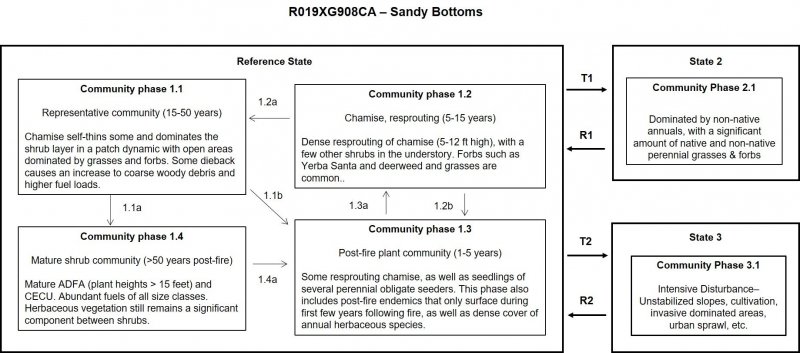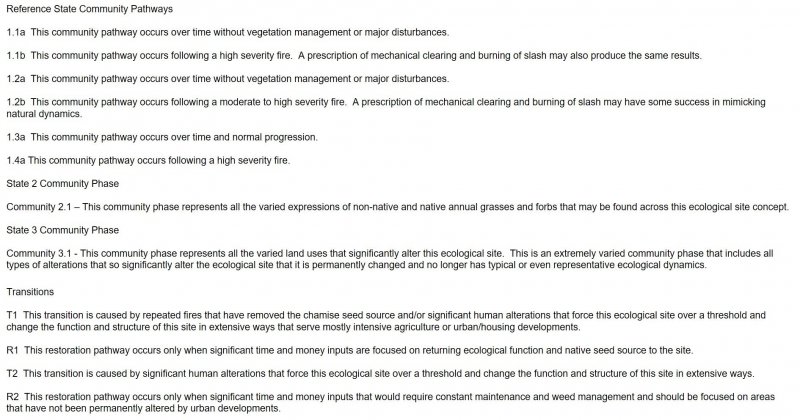Ecological site group R019XG908CA
Sandy Bottom
Last updated: 07/06/2023
Accessed: 12/21/2025
Ecological site group description
Key Characteristics
- located on basin floors
- sandy texture
Provisional. A provisional ecological site description has undergone quality control and quality assurance review. It contains a working state and transition model and enough information to identify the ecological site.
Physiography
This ESG is found on valley toe slopes ranging from 2-9% at elevations that go from 30 to 350 feet.
Climate
The average annual precipitation of this MLRA covers a diverse landscape of valleys and mountains and can range anywhere from 8 to 53 inches (215 to 1,354 millimeters), increasing with elevation. Most of the rainfall occurs as low- or moderate-intensity, Pacific frontal storms during winter. Rain can turn to snow at the higher elevations. A little snow may fall in winter, but it does not last. Summers are dry, but fog provides some moisture along the coast. The average annual temperature is 38 to 67 degrees F (3 to 19 degrees C). The freeze-free period averages 310 days in the valleys, 245 days in the mountains, and ranges from 125 to 365 days along the coast. It decreases in length with elevation. The longest freeze-free period occurs at the lower elevations along the western edge of the area.
Soil features
The soils of this ESG are varied, but will likely be sandy-skeletal or sandy, deep, and excessively well drained.
A representative soil for this ESG is the Soboba soil, a sandy-skeletal, mixed, thermic Typic
Xerofluvent.
Vegetation dynamics
This ESG is dominated by low density of chamise chaparral with a significant cover and density of grasses and forbs. Fire occurs regularly in this ESG and influences habitat structure. Mature chamise is single layered and average 1 to 2 m (3.3 to 6.6 ft) in height on these excessively well drained soils. Total shrub cover may be considerably lower than other chamise dominated sites due to the extremely xeric, nutrient poor soils.
In southern California, white sage, black sage, and California buckwheat are common associated species at lower elevations and on more recently disturbed sites. After fire, the primary disturbance on this ESG, young stands of chamise recovering from fire with greater than 20 percent absolute shrub cover and relatively short-lived subshrubs such as yerba santa are present.
Major Land Resource Area
MLRA 019X
Southern California Coastal Plains and Mountains
Subclasses
Correlated Map Unit Components
23477466, 22643238, 22643726, 22643964, 22643966, 22643976, 22643980, 22643983, 22673385, 22673827
Stage
Provisional
Contributors
Curtis Talbot
Click on box and path labels to scroll to the respective text.

